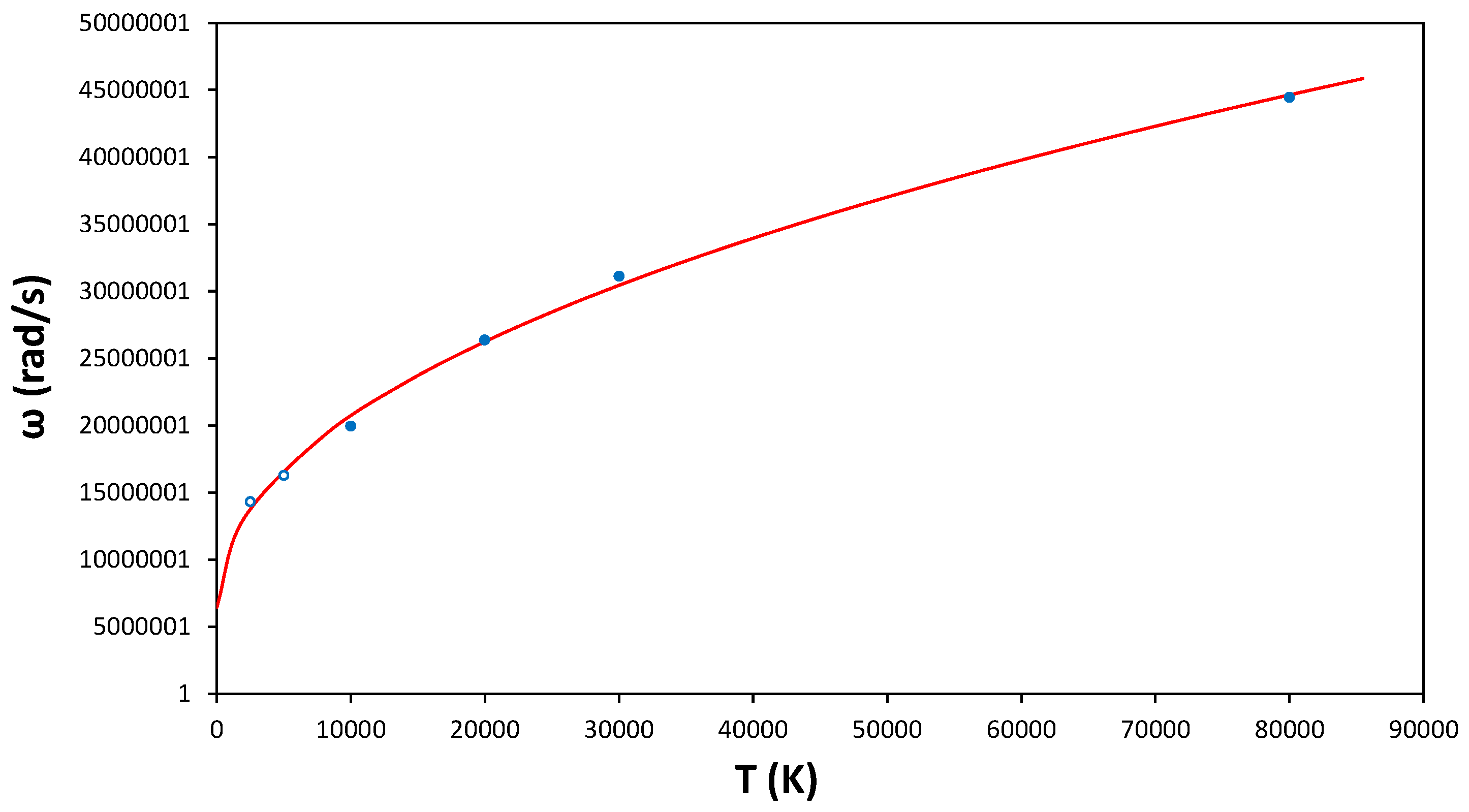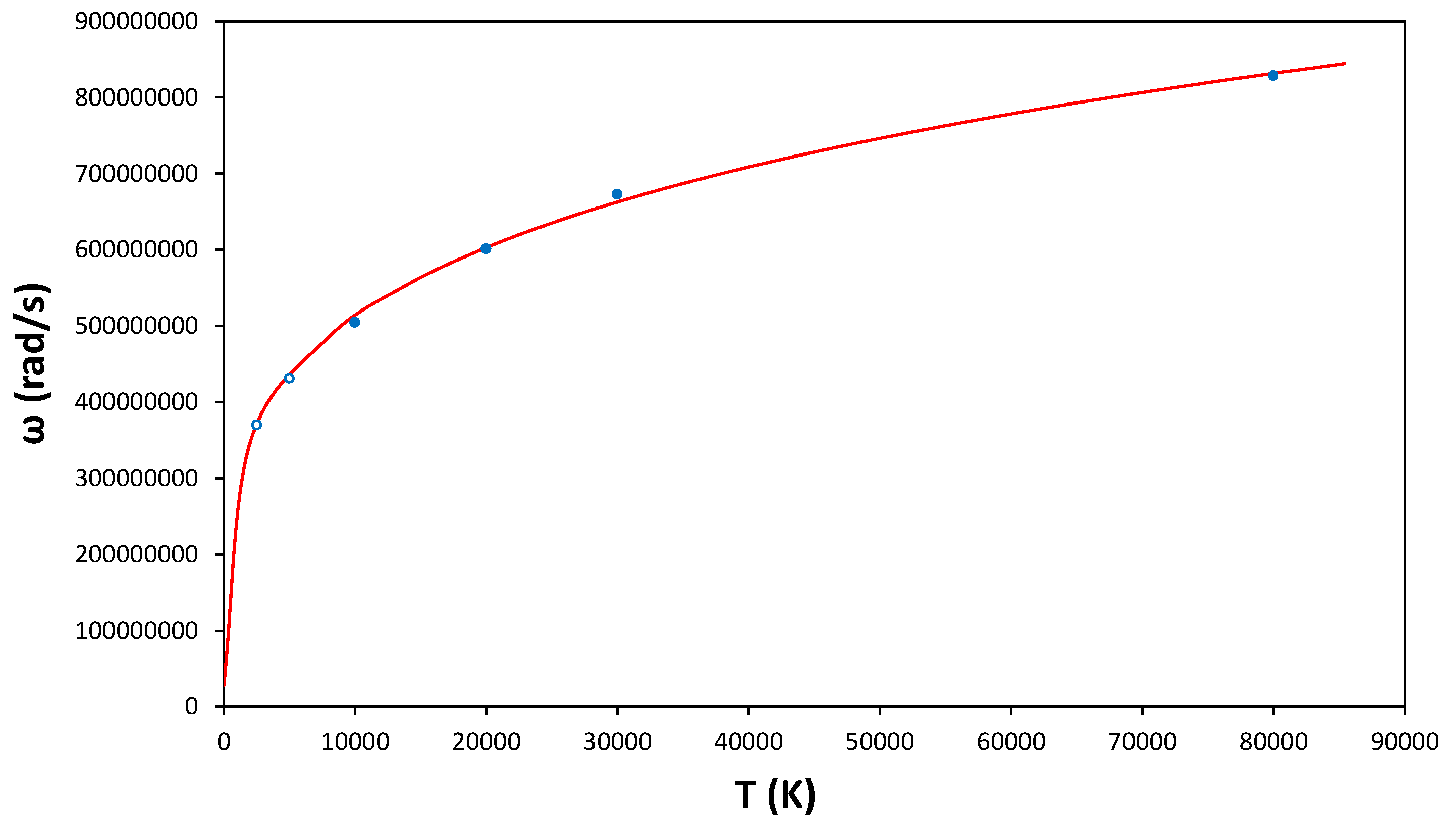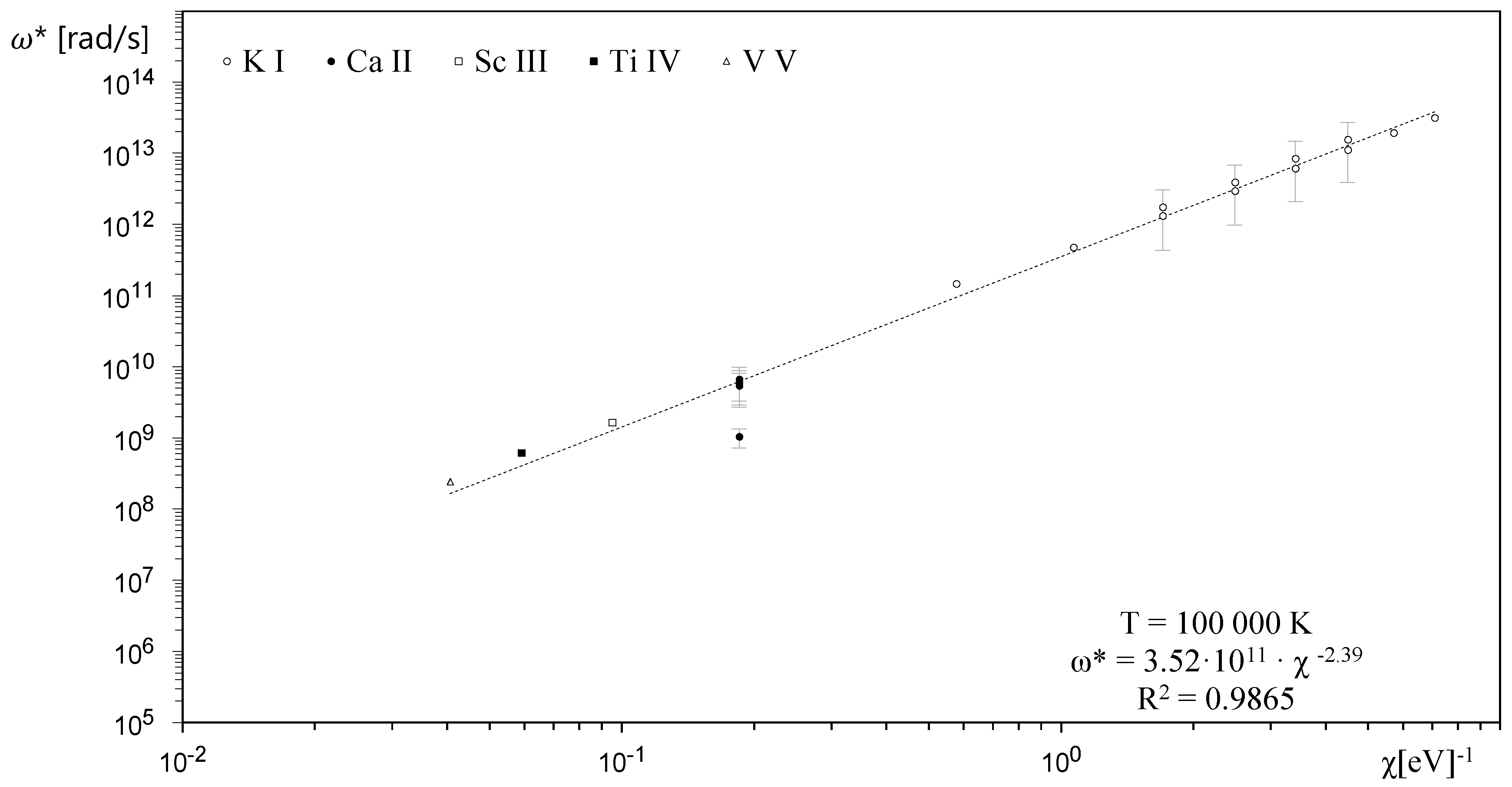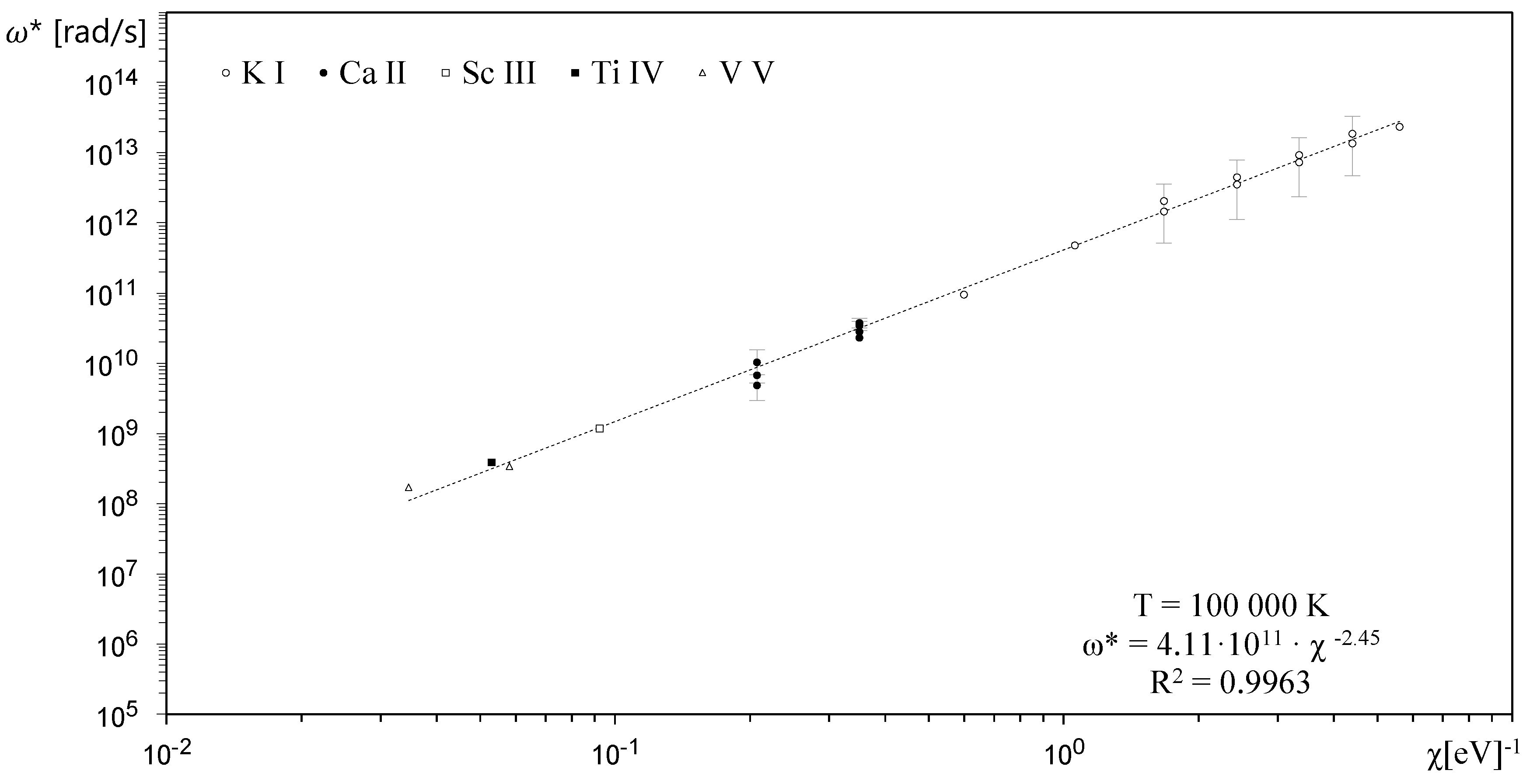Stark Widths Regularities Within: ns-np, np-ns, np-nd, nd-np and nd-nf Spectral Series of Potassium Isoelectronic Sequence
Abstract
1. Introduction
2. Theoretical Background
3. Results and Discussion
4. Conclusions
Author Contributions
Acknowledgments
Conflicts of Interest
References
- Elabidi, H.; Sahal-Bréchot, S. Checking the dependence on the upper level ionization potential of electron impact widths using quantum calculations. Eur. Phys. J. D 2011, 61, 285. [Google Scholar] [CrossRef]
- Gigosos, M.A. Stark broadening models for plasma diagnostics. J. Phys. D 2014, 47. [Google Scholar] [CrossRef]
- Sahal-Bréchot, S.; Dimitrijević, M.S.; Moreau, N.; Ben Nessib, N. The STARK-B database VAMDC node: A repository for spectral line broadening and shifts due to collisions with charged particles. Phys. Scr. 2015, 90. [Google Scholar] [CrossRef]
- Rauch, T.; Ziegler, M.; Werner, K.; Kruk, J.W.; Oliveira, C.M.; Vande Putte, D.; Migniani, R.P.; Kerber, F. High-resolution FUSE and HST ultraviolet spectroscopy of the white dwarf central star of Sh 2-216. Astron. Astroph. 2007, 470, 317–329. [Google Scholar] [CrossRef]
- Mucciarelli, A.; Bellazzini, M.; Merle, T.; Plez, B.; Dalessandro, E.; Ibata, R. Potassium: A new actor on the globular cluster chemical evolution stage. The case of NGC 2808. Astroph. J. 2015, 801, 68. [Google Scholar] [CrossRef]
- Garkusha, I.; Makhlaj, V.; Byrka, O.; Taran, V.; Voitsenya, V.; Malykhin, S.; Herashchenko, S.; Surovitskiy, S.; Nowakowska-Langier, K.; Sadowski, M.J.; et al. Materials surface damage and modification under high power plasma exposures. J. Phys. Conf. Ser. 2018, 959, 012004. [Google Scholar] [CrossRef]
- Purić, J.; Šcepanović, M. General Regularities of Stark Parameters for Ion Lines. Astroph. J. 1999, 521, 490. [Google Scholar] [CrossRef]
- Dojčinović, I.P.; Tapalaga, I.; Purić, J. Stark Width Regularities within Beryllium Spectral Series. Publ. Astron. Soc. Aust. 2011, 28, 281–289. [Google Scholar] [CrossRef][Green Version]
- Dojčinović, I.P.; Tapalaga, I.; Purić, J. Stark parameter regularities of neutral helium lines within different spectral series. Mon. Not. R. Astron. Soc. 2012, 419, 904–912. [Google Scholar] [CrossRef]
- Dojčinović, I.P.; Tapalaga, I.; Purić, J. Stark-width regularities of neutral lithium lines within different spectral series. Mon. Not. R. Astron. Soc. 2013, 429, 2400–2406. [Google Scholar] [CrossRef][Green Version]
- Jevtić, D.; Dojčinović, I.P.; Tapalaga, I.; Purić, J. Stark width regularities of neutral potassium lines within different spectral series. Bull. Astr. Soc. India 2012, 40, 151. [Google Scholar]
- Tapalaga, I.; Dojčinović, I.P.; Milosavljević, M.K.; Purić, J. Stark Width Regularities within Neutral Calcium Spectral Series. Publ. Astron. Soc. Aust. 2012, 29, 20–28. [Google Scholar] [CrossRef][Green Version]
- Tapalaga, I.; Dojčinović, I.P.; Purić, J. Stark width regularities within magnesium spectral series. Mon. Not. R. Astron. Soc. 2011, 415, 503–512. [Google Scholar] [CrossRef][Green Version]
- Tapalaga, I.; Trklja, N.; Dojčinović, I.P.; Purić, J. Stark width regularities within spectral series of the lithium isoelectronic sequence. Mon. Not. R. Astron. Soc. 2018, 474, 5479–5484. [Google Scholar] [CrossRef]
- Trklja, N.; Tapalaga, I.; Dojčinović, I.P.; Purić, J. Stark widths regularities within spectral series of sodium isoelectronic sequence. New Astron. 2018, 59, 54–59. [Google Scholar] [CrossRef]
- Sahal-Bréchot, S.; Dimitrijević, M.S.; Moreau, N. Stark-B database; Observatory of Paris, LERMA and Astronomical Observatory of Belgrade. 2016. Available online: http://stark-b.obspm.fr (accessed on 2 December 2016).
- Kramida, A.; Ralchenko, Y.; Reader, J.; NIST ASD Team. NIST Atomic Spectra Database (ver. 5.5.6); National Institute of Standards and Technology: Gaithersburg, MD, USA. Available online: https://physics.nist.gov/asd (accessed on 27 June 2018).
- Kusch, H.J.; Pritschow, H.P. Broadening and Shift of Calcium Lines by Microfielda. Astron. Astrophys. 1970, 4, 31. [Google Scholar]
- Konjević, N.; Wiese, W.L. Experimental Stark widths and shifts for non-hydrogenic spectral lines of ionized atoms. JPCRD 1976, 5, 259–308. [Google Scholar] [CrossRef]
- Goldbach, C.; Nollez, G.; Plomdeur, P.; Zimmermann, J.P. Stark-width measurements of singly ionized calcium resonance lines in a wall-stabilized arc. J. Phys. A 1983, 28, 234. [Google Scholar] [CrossRef]
- Griem, H.R. Spectral Line Broadening by Plasmas; Academic Press: New York, NY, USA, 1974; p. 2. ISBN 0-12-302850-7. [Google Scholar]








| Element | Number of Lines |
|---|---|
| K i | 46 |
| Ca ii | 56 |
| Sc iii | 10 |
| Ti iv | 10 |
| V v | 26 |
| Spectral Series | p | q |
|---|---|---|
| ns-np | 2.00 | 2.39 |
| np-ns | 1.87 | 2.39 |
| np-nd | 4.11 | 2.45 |
| nd-np | 3.87 | 2.34 |
| nd-nf | 3.61 | 2.54 |
| Emitter | Transition | [nm] | [nm] |
|---|---|---|---|
| Ti iv | 4d-5f | 126.51 | |
| Ti iv | 6p-7d | 315.67 | |
| Cr vi | 4d-5p | 116.72 | |
| Cr vi | 4d-4f | 126.48 | |
| Cr vi | 5p-6s | 134.27 | |
| Cr vi | 4s-4p | 141.76 | |
| Cr vi | 5p-5d | 217.66 | |
| Fe viii | 3d-7f | 14.98 | |
| Fe viii | 3d-6f | 15.76 | |
| Fe viii | 3d-5f | 17.28 | |
| Fe viii | 3d-4p | 19.47 | |
| Fe viii | 3d-4f | 20.98 |
© 2019 by the authors. Licensee MDPI, Basel, Switzerland. This article is an open access article distributed under the terms and conditions of the Creative Commons Attribution (CC BY) license (http://creativecommons.org/licenses/by/4.0/).
Share and Cite
Trklja, N.; Dojčinović, I.P.; Tapalaga, I.; Purić, J. Stark Widths Regularities Within: ns-np, np-ns, np-nd, nd-np and nd-nf Spectral Series of Potassium Isoelectronic Sequence. Atoms 2019, 7, 99. https://doi.org/10.3390/atoms7040099
Trklja N, Dojčinović IP, Tapalaga I, Purić J. Stark Widths Regularities Within: ns-np, np-ns, np-nd, nd-np and nd-nf Spectral Series of Potassium Isoelectronic Sequence. Atoms. 2019; 7(4):99. https://doi.org/10.3390/atoms7040099
Chicago/Turabian StyleTrklja, Nora, Ivan P. Dojčinović, Irinel Tapalaga, and Jagoš Purić. 2019. "Stark Widths Regularities Within: ns-np, np-ns, np-nd, nd-np and nd-nf Spectral Series of Potassium Isoelectronic Sequence" Atoms 7, no. 4: 99. https://doi.org/10.3390/atoms7040099
APA StyleTrklja, N., Dojčinović, I. P., Tapalaga, I., & Purić, J. (2019). Stark Widths Regularities Within: ns-np, np-ns, np-nd, nd-np and nd-nf Spectral Series of Potassium Isoelectronic Sequence. Atoms, 7(4), 99. https://doi.org/10.3390/atoms7040099





